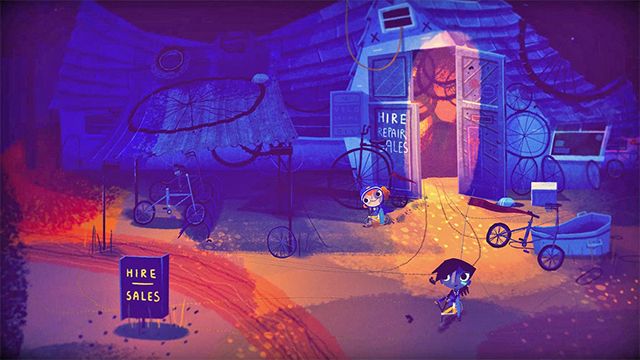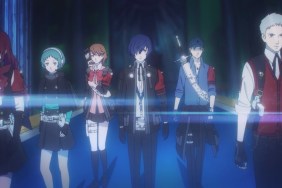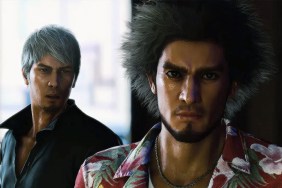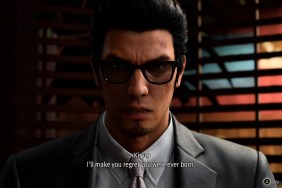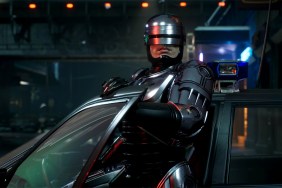Knights and Bikes is almost out and is, according to our recent demo, quite promising. It’s the product of developer Foam Sword, a small team comprised of veterans of other renowned studios like Media Molecule and Insomniac. That clout helped translate to a successful Kickstarter campaign. Rex Crowle, who wears multiple different hats on the team, recently sat down with us to speak about being in the end days of that Kickstarter-funded game as well as how his Cornish upbringing influenced the game and how he’s never seen a Star Wars movie.
Game Revolution: Knights and Bikes is based in a specific time in a specific place. You have European roots. How did your comeuppance influence this game?
Rex Crowle: People used to say to me when I was a child, “We had to make our own entertainment.” But growing up on a farm in the middle of nowhere with not really a lot of TV — I’ve still not seen any Star Wars films or anything — and being a little bit cut off from pop culture, you did have to go out and explore the farms and get on your bike and ride around try to find fun stuff to do and find a fun friend to come on that adventure with you. So there’s definitely a lot of those kinds of feelings in the game along with some quite specific references.
Like most of the levels are somewhere I used to explore when I was a kid. There’s a place called Luxulyan Valley which, apart from being hard to spell [Editor’s note: Thanks, Google!], is like a woodland that the deeper you go into the woods, the more old ruins stuff you find like an aqueduct hidden away in the trees. It’s an epic aqueduct but you’d never know it was there until you got through the trees.
There were loads of stuff to uncover and even though most of the stuff there was only like 200 years old, which is still pretty old, as a kid, you’re like “I bet this is 2,000 years old! Like this stone here was the original stone here that the entire universe was made out of.” There’s a lot of that childhood [wonder] and the fun stuff of being a kid and adventuring and adding your own stories on to what you are experiencing.
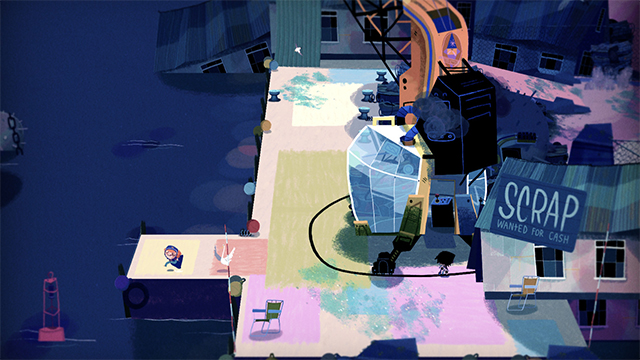
And then in a more [modern way], me and [fellow Foam Sword developer] Moo Yu had a bit of a desire to make something that was a bit more like a Goonies RPG. We thought it would be really fun to have a gang of kids that you are managing and swapping between and using their different abilities to have some kind of grand adventure. As development went on, we gradually tweaked that design quite a lot to both focus in on the characters that we liked the most. We didn’t want it to be too stereotypical. We didn’t want it to be a large gang. We wanted two characters that you really cared about that felt really unique.
And also we moved away from The Goonies influence because it felt that we would be able to put more of our own experiences into it and make it more unique. If I was just making a very Goonies-inspired game, at that point, I hadn’t been to Portland and I didn’t know that area very well. We have been on a road trip there now and it’s been really cool to see it.
But I’d only be doing a very secondhand version of that movie because I hadn’t actually experienced any of that for myself so it would be harder to add to it. Like Moo grew up in Anaheim just outside of Disneyland so he has a lot of stuff that he could bring in terms of what theme parks are like and the culture around theme parks.
So we set the game on this island that was taking the Cornish influence where I grew up but also sort of touristy commercial mining of the natural beauty to create theme parks and other tourist attractions [that Moo grew up with].
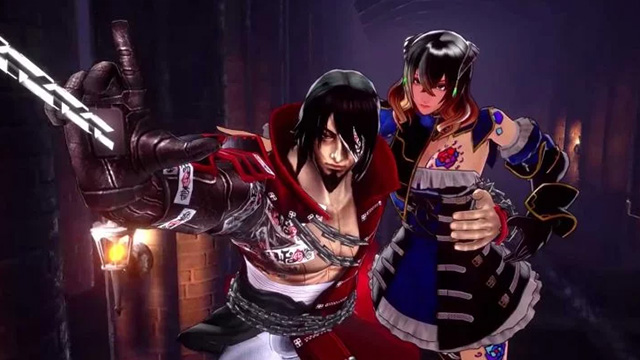
GR: This is a Kickstarter game. And when a Kickstarter game is good like Bloodstained, it’s just a good game. But when a Kickstarter game is bad, it’s like, “Those damn Kickstarter games!” So what do you feel about Kickstarter games, having almost being done with one?
RC: Well, it’s quite hard doing a Kickstarter game because you do it with the absolute best intentions. Any project you see on Kickstarter is a product of someone who is very excited of what they could make and the potential and they really want to share that with other people and go on that journey with them and help make it happen.
I think the tricky thing is that games are very experimental and they never turn out quite how you think they will and that could be a really good or a really bad thing. It’s a medium that hasn’t really established itself and the fact that technology is always changing. So it’s very hard to just have the model of “Here is how to make a game: you do this, this, this, and this.” And then at the end, you have a great game.
If you’re Kickstarting something, you’re tending to show it quite early. Some of it is just you’re kind of hoping that the game will turn out how you think it will, but really you’re doing a pitch. It’s the equivalent of going to a publisher with a bunch of concept art and a teaser trailer. And then you work on it for two or three years and then you show it to the general public and they get to see that first glimpse of the game and get excited over it.
With a Kickstarter game, you’re skipping out the whole process and just going, “Here’s how it might be.” And everyone gets excited and thinks it’s going to be exactly that. It’s very hard to guarantee that it will be that. It might be worse, it might be better. Some of the ideas that you might show off early might not work or aren’t fun later down the line. It does make showing stuff early a little bit tricky.
But at the same time, we’re a really tiny team so it’s really good to have that support and know that people believe in you and it gives you a really good motivation to keep going. People are waiting for it and they’re really excited by it. And it also gives it a little bit of structure as well. If you’re working on something as just a hobby project and maybe you’re working on it with a few friends like we are, it’s sometimes hard to maintain a really good rhythm and make sure that you’re not getting lost in the weeds and you’re pushing the game forward all the time.
But having the Kickstarter, means that, as long as you stick to it and are doing a monthly update for your backers, it’s like a way of having a milestone every month where you want to show what you’re doing and what you’re working on so it keeps more of a schedule. It’s been a really good experience and it’s been good having all the backers be so supportive. And they’ve had to wait a bit longer than they were expecting but I hope that they will be happy with the end result.
GR: Do you think Kickstarter has worked out for you, specifically?
RC: Yeah, I think so. I think that just, personally, I probably would have liked to have kept it under wraps a little longer so I could just fully prove the whole game before showing it to everyone else. But to anyone else, it doesn’t really make any difference.
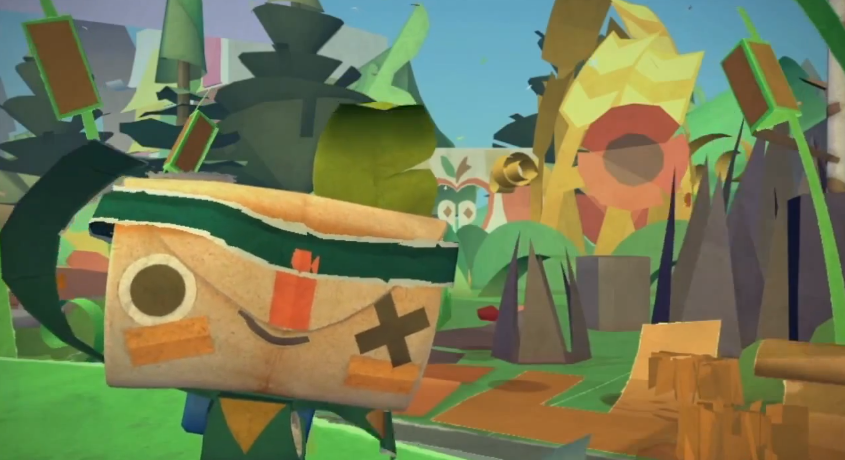
GR: This is a very lighthearted game like your work with Media Molecule. Is that just what you’re attracted to?
RC: Yeah, I think it’s cool to make games that are quite joyful. It gets a bit overused but “fun” is a good thing. It’s nice if a game is enjoyable and gets people talking and laughing and showing positive emotions. Particularly if it is a multiplayer game as well, it creates more of a bond between the players.
I’m not really into competitive online games because I feel it just makes everyone angry. There’s enough anger around. I think it’s a shame to not put some kind of emotional journey under the surface, something that is a little bit more emotional at the core. And that’s definitely something we tried to put into Tearaway and hopefully to some degree, to this as well. And hopefully it’s surprising how much players will feel about the characters and the story as they move through it.
